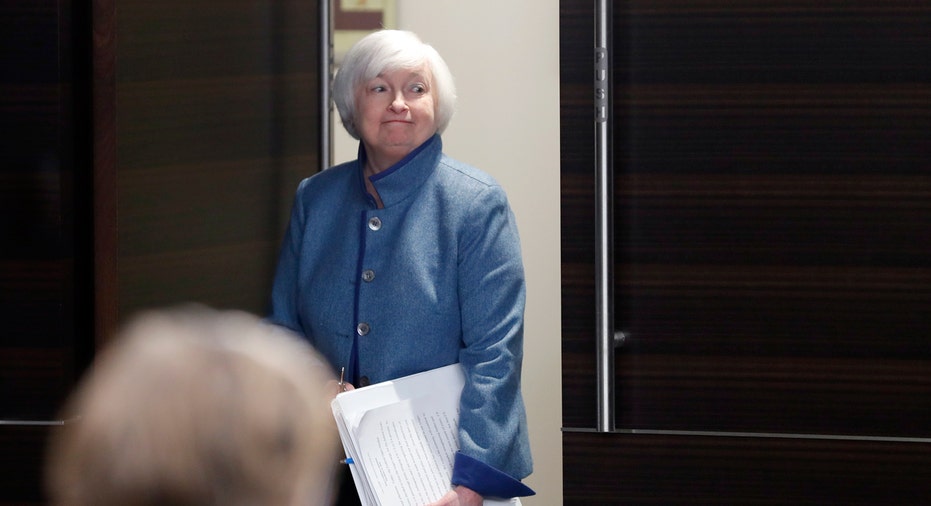Fed Cautiously Eyes Trump’s Fiscal Policies Amid ‘Considerable Uncertainty’

While Wall Street continues to cheer the prospects of President-elect Donald Trump’s fiscal policies, members of the Federal Reserve’s policy-setting committee are carefully eyeing developments and new details from the incoming administration.
The central bank raised the short-term federal funds rate by 0.25 percentage point for the first time in a year in December, and only the second time in a decade. But the unanimous decision didn’t come without healthy discussion among members about the results of the U.S. election and potential impact on monetary policy. Policymakers were paying close attention to Trump’s plans for tax cuts, trade-policy revisions, relaxed Wall Street regulation, and more fiscal stimulus through infrastructure spending, minutes from last month’s meeting released on Wednesday showed.
The Fed, in its policy statement, said it expected to raise rates by 0.25 percentage point three times in 2017. The minutes revealed that decision was due to positive investor sentiment around fiscal-stimulus expectations, but stressed that uncertainty around both fiscal and economic policies had increased since Election Day.
“Several participants pointed out that, depending on the mix of tax, spending, regulatory, and other possible policy changes, economic growth might turn out to be faster or slower than they currently anticipated. However, almost all indicated that the upside risks to their forecasts for economic growth had increased as a result of prospects for more expansionary fiscal policies in coming years,” the minutes read.
Members worried that what they called “considerable uncertainty” is likely to not only weigh on future monetary-policy decisions but also communication efforts by the Fed, which have been a subject of much scrutiny over the last year after the central bank forecasted three rate hikes in 2016 and ended up raising just once.
“The greater uncertainty about these [fiscal] policies made it more challenging to communicate to the public about the likely path of the federal funds rates,” the minutes said.
Committee members found it important to remind the public – and Wall Street – of Fed Chief Janet Yellen’s often repeated line that monetary policy decisions are not on a “pre-set course” and continue to rely on incoming economic data with its dual mandate of price stability and full employment.
Essentially, then, 2017 is likely to be a year of continued patience and caution at the Fed as members resist any temptation to react to sudden changes in market conditions as a result of what could be potentially disappointing fiscal policies compared to current expectations.
“There’s a lot of hype and expectation built in right now. The Fed doesn’t want to get too far ahead of themselves,” said Navy Federal Credit Union corporate economist Alan MacEachin. “They have their credibility to maintain so they’re not going to give hints about what they’ll do until they’re sure that’s where they want to go.”
Data from the last half of the year showed signs of improvement and stability as the labor market continued to firm, inflation climbed closer to its 2% target, and consumers became much more willing to spend in the last few months of the year.
In the year ahead, FOMC members expect the labor market to strengthen “somewhat further” over the medium term, though they worried a “sizable” risk of undershooting the longer-run normal employment rate had increased and a swifter pace of rate hikes could be needed to limit a potential buildup of inflation. Still, minutes showed downside risks to inflation remained in place and a long-term undershooting of the unemployment rate could actually help inflation get to its target level.